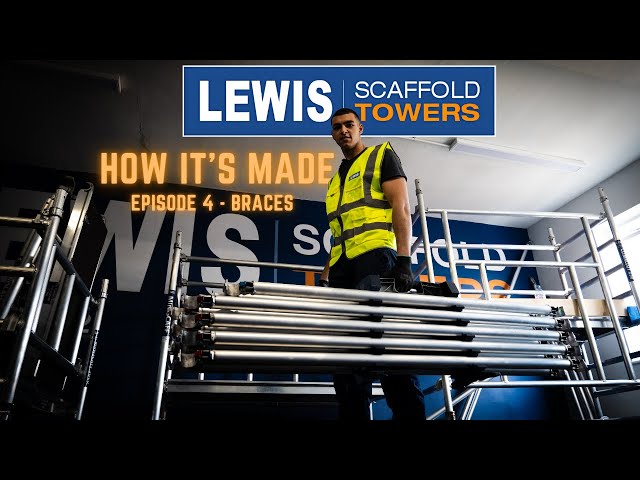At LEWIS Access, we manufacture two types of braces for our scaffold towers: horizontal and diagonal braces. These provide significant structural support, ensuring the safety of operatives using and nearby our scaffold towers. So, let’s find out how it’s made.
Table of Contents
Watch Scaffold Braces Being Manufactured
Step 1: Die Casting
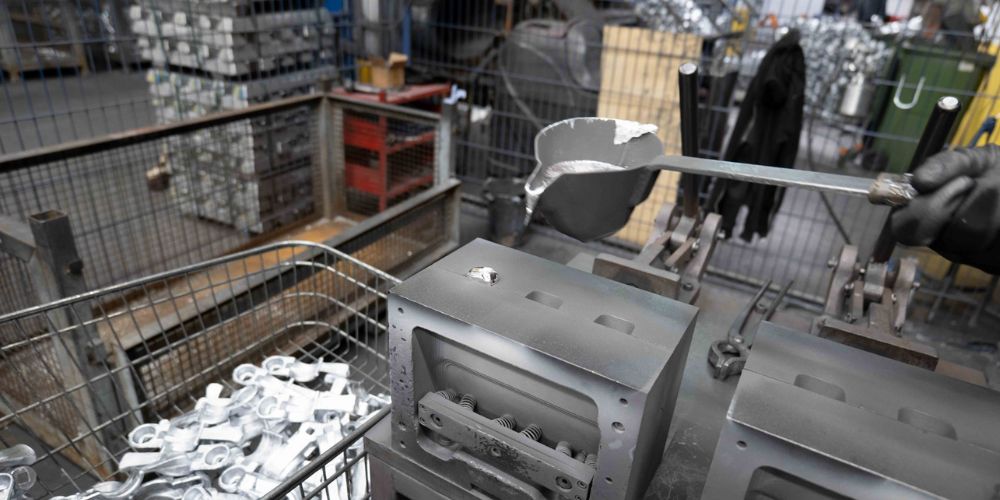
The manufacturing process of our scaffold braces starts with die casting the hooks at the heart of the business: the foundry, our workshop for casting metal.
It’s here where magical things happen!
As you may have read or seen from:
There are off-cuts, and we recycle all of our off-cuts. It’s good for the environment and our customers in terms of competitive prices.
All our aluminium cut-offs are melted to a liquid form, which we pour into the gravity die-cast (permanent mould casting) in the shape of our hooks.
As the liquid form cools down, the metal solidifies, where it creates the hook.
Once it cools down sufficiently, it proceeds to the next step.
Step 2: Off-Cut
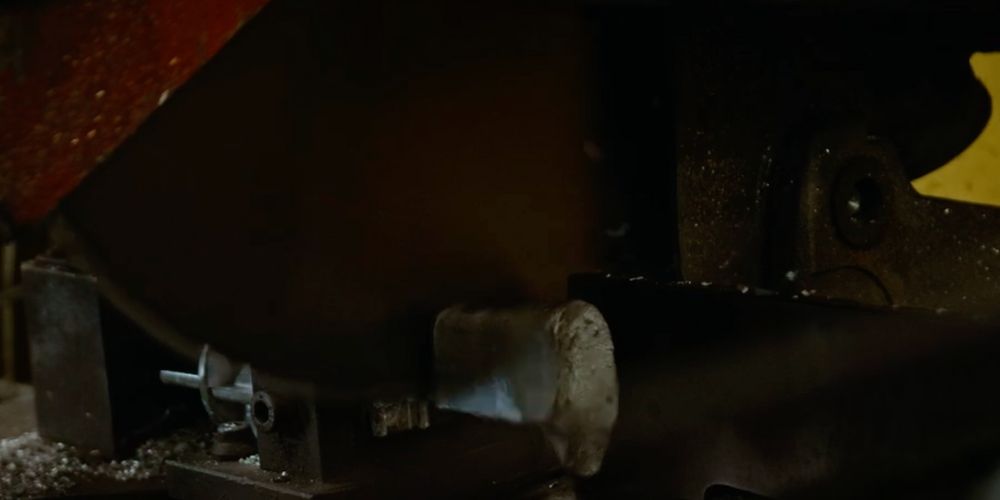
When the hook first comes out of the die-cast, it’s a little rough around the edges, particularly with a large off-cut.
So, an operative saws off the excess aluminium.
Now, it’s time for sanding.
Step 3: Sanding
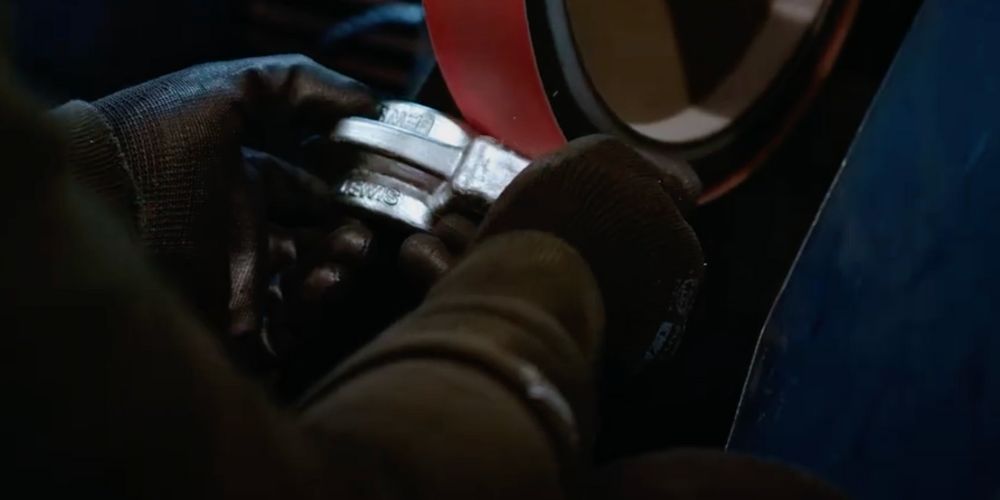
When the off-cut is removed, it leaves sharp ridges, which could cut operatives during use.
So, it requires sanding.
All of the edges, even from the original mould, become smoother.
Now, it’s time to move to the functional part.
Step 4: Cast Machine with Our Custom-Made Jig
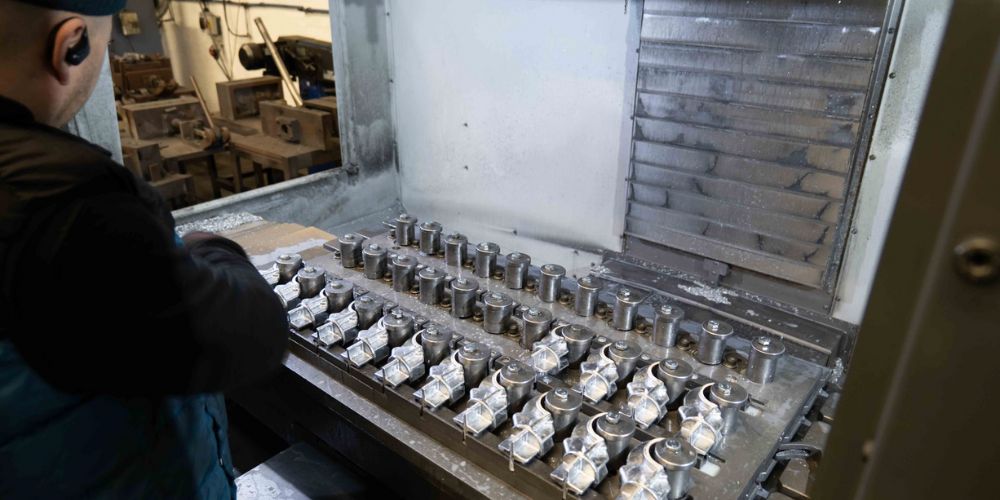
At this stage, we insert approximately 30 hooks into the jig, and it vertically drills several holes.
Step 5: The Trigger
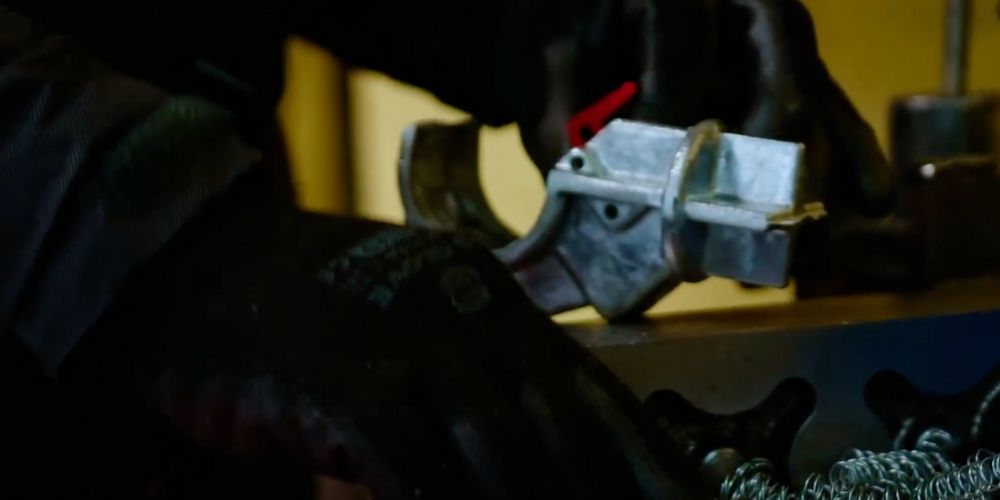
The trigger is the last production of the hook. Depending on whether the brace is horizontal or diagonal, either a blue or red trigger is fitted.
Using the holes from the previous step, an operative inserts an immovable pin inside to prevent the trigger from escaping.
In addition, a spring is inserted, so when the trigger is pressed, it springs back up, preventing the brace from disconnecting when erecting the scaffold tower.
Now the hook is ready, it’s time to use the robot.
Step 6: The Welding Robot
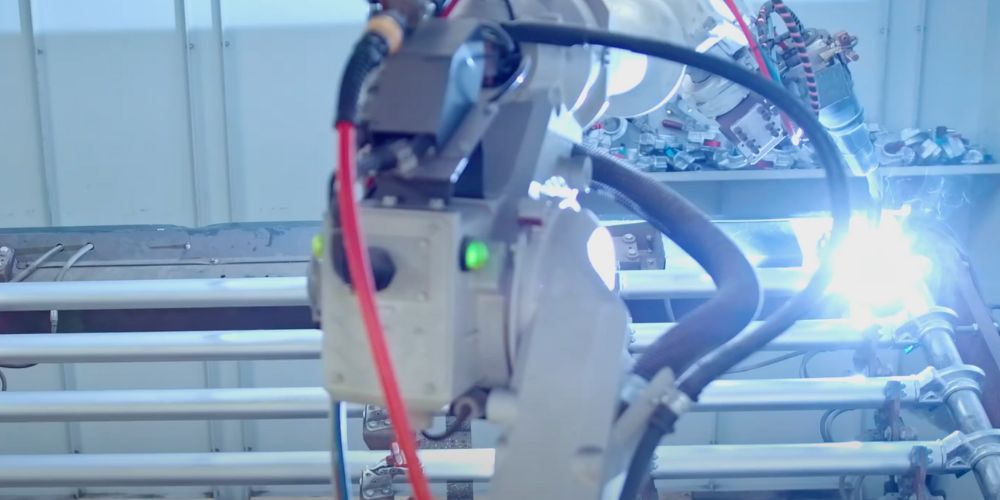
Before using the welding robot, we use our sawing machine to cut aluminium tubes to size, depending on the size of the scaffold tower.
Then, an operative loads the aluminium tubes into a jig, and insert the hook into the tube, while clipping onto another tube.
At this point, the robot welds all the way around the connection point between the hook and tube.
Step 7: Quality Control
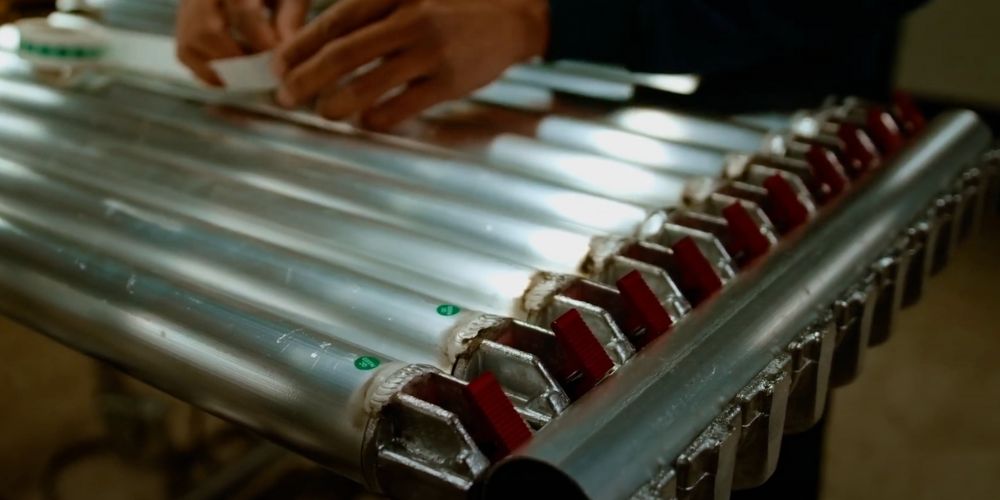
As always, we must undertake quality control.
An operative manually reviews the robot’s welding. If required, the operative undertakes manual welding.
Finally, the brace receives a green “QC” sticker indicating it has passed quality control.
Wrapping It Up
At LEWIS Access, we manufacture two essential types of scaffold braces—horizontal and diagonal—which play a crucial role in structural stability and safety. The production process begins with die-casting aluminium off-cuts to form durable hooks, which are then trimmed and sanded to remove excess and sharp edges. These hooks are precision-drilled using a custom jig to prepare for trigger assembly. A colour-coded trigger (blue for diagonal, red for horizontal) is fitted, complete with a spring mechanism to ensure secure connection.
Next, aluminium tubes are cut to size, and the hooks are robotically welded to the tubes. The final step involves quality control, where each brace is thoroughly inspected and manually welded if necessary, before being approved with a green QC sticker. The entire process highlights our commitment to safety, precision, and sustainable manufacturing through recycling.
Finally, we make it easier for our customers to access spare parts, so if you need to buy scaffold braces, you can.


